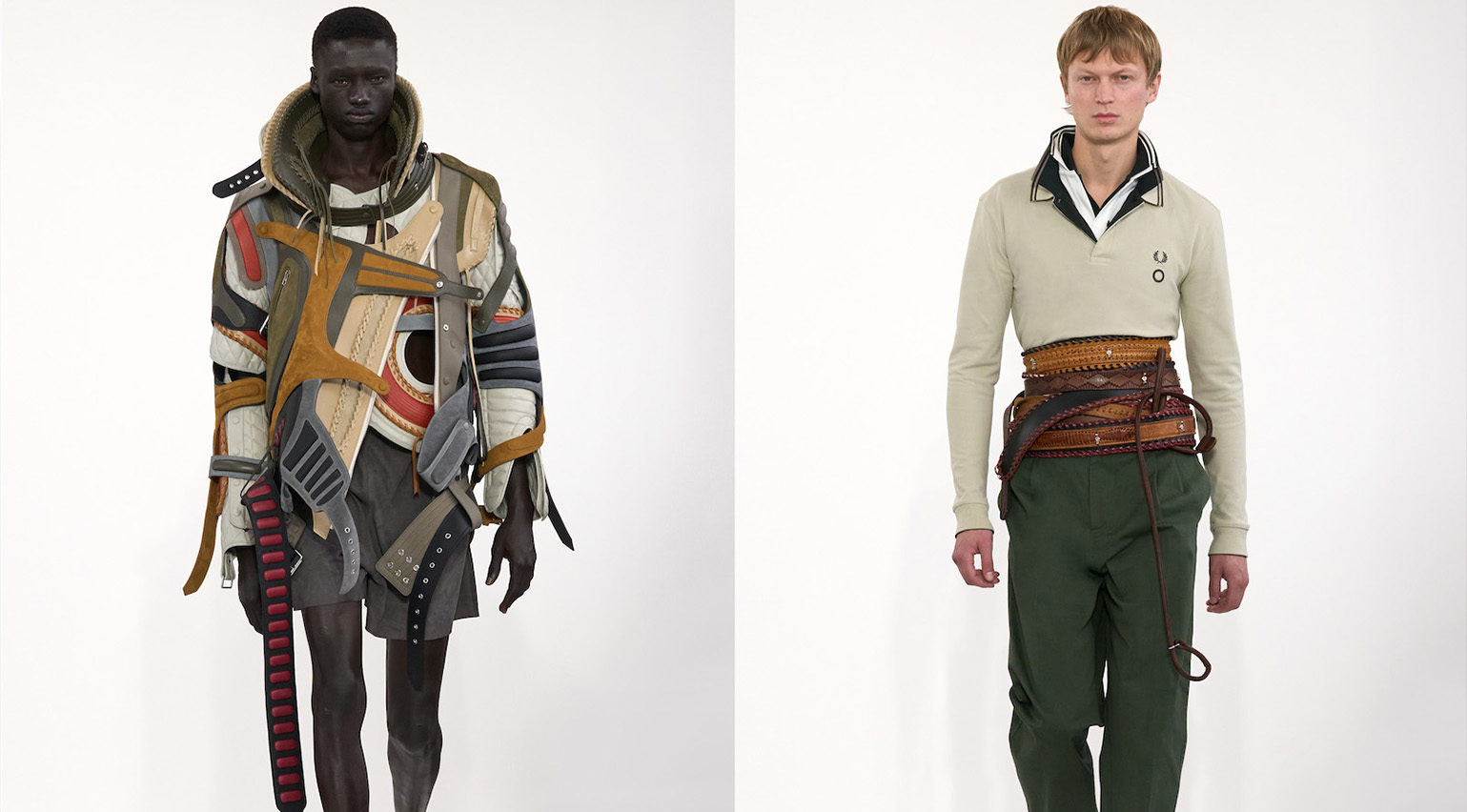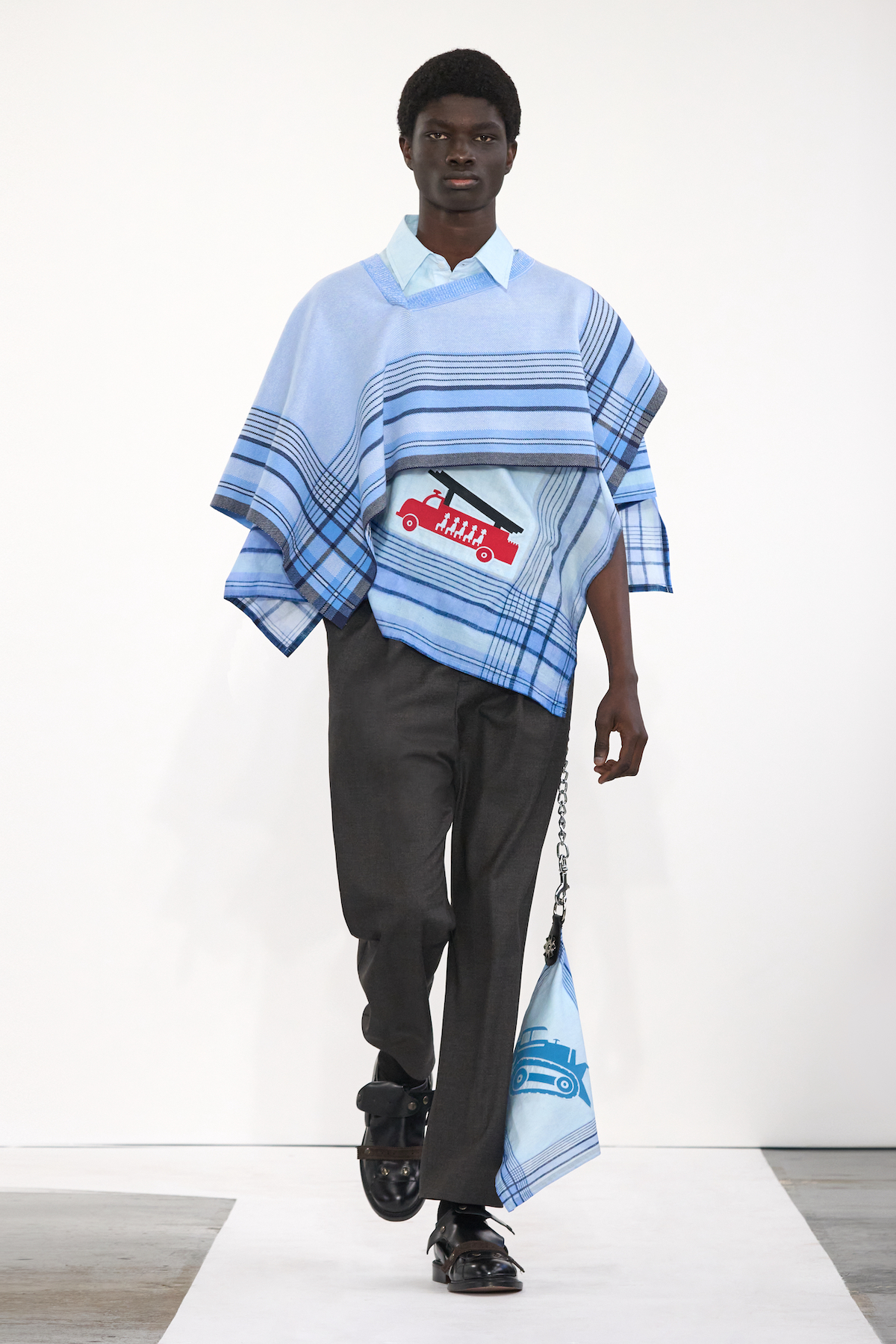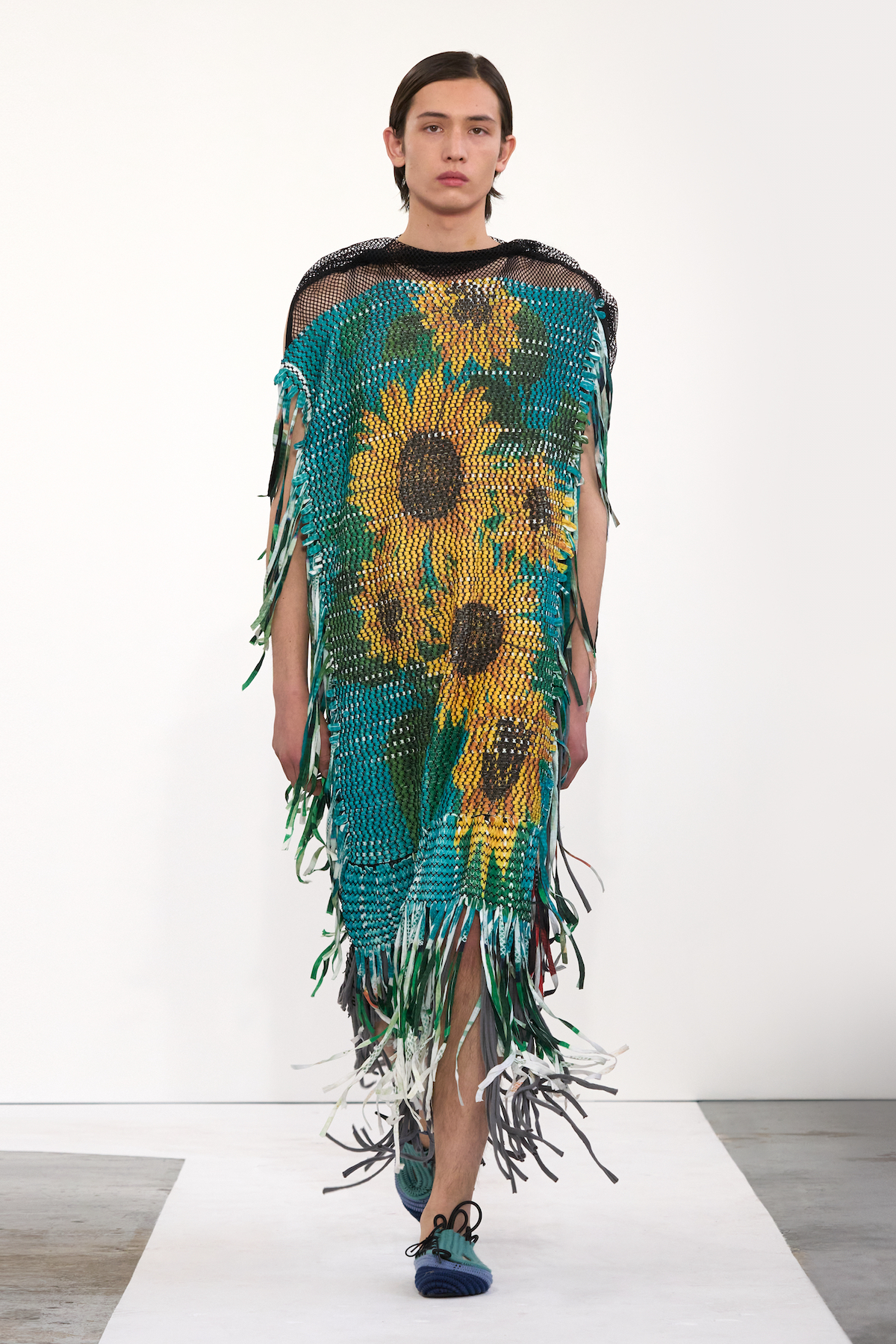
For his return to the runway after a two-year hiatus – he last held a show in 2022 in Paris’ Musée de l’Homme and has presented collections via lookbooks in the seasons since – British menswear designer Craig Green returned to London with an off-schedule show in his Docklands studio presented to just 120 attendees yesterday morning (5 June 2024). With the studio cleared out of pattern-cutting tables and machines, a white runway painted across the floor and backdropped by the River Thames through floor-to-ceiling windows beyond, Green admitted after the show that opening up the place he says he spends seven days a week was ‘very scary‘. ‘It’s like someone painting a runway through your house,’ he smiled.
Backstage after the show, he said the collection had begun with a consideration of his late father, who passed away six months prior. ‘I guess you have ideas of what your father will be, and your father has ideas of what you’ll be,’ he said of the starting point of the collection, which once again saw him interrogate the trappings of masculinity – he is perhaps best known for his riffs on workwear – in his expansive, experimental style. ‘It’s not so much a memorial to him, but more thinking about the relationships between sons and fathers,’ he continued.
Craig Green S/S 2025: ’the relationships between sons and fathers’

The roots of the collection once again lay in traditional menswear garments, here extravagantly layered, from a ‘biker jacket’ made from colourful protective patches to stacks of belts that looped over polo shirts (the latter a new collaboration with Fred Perry). Tailored jackets and parkas were overlaid with blobs of quilted fabric, like a warped take on camouflage. Motifs included colourful diggers and trucks, like those you might find on children’s clothing.
‘I guess they’re quite traditional codes of masculinity,’ Green offered. ‘I always think it's strange – like in children's bedrooms, where they have pictures of tractors and fire engines and cement mixers, from the day they are born.’ The motifs here appeared on checkered cotton tops that, in their construction, recalled oversized handkerchiefs. ‘Handkerchiefs are so simple, just a square of fabric, but they have so much meaning,’ he continued, noting that the shape inspired the voluminous kaftan-like silhouettes adorned with flourishes of colour. ‘They envelop the body but at the same time they are like baby’s bibs.’

’[I was also thinking about] when some people’s parents die and they make patchwork quilts out of their shirts, and things like that,’ Green continued. ‘It’s in a way beautiful, but also strange – the way that clothing holds so much. You don’t want to throw away someone’s clothes, when actually they are just functional things.’
This frisson of emotion ran throughout the collection, which was at its most heartfelt in the extraordinary closing looks, a series of macramé-style net tabards decorated with nostalgic floral motifs and complete with colourful trails of tassels. They spoke to Green’s ability to transform the familiar through meticulous – and often innovative – craft; here, the starting point was chintzy tea towels remembered from childhood. ’My father was more of a tea towel man than a handkerchief man,’ he smiled.
‘I never really talk about my personal life,’ he said. ’But I think it’s because we are here. I’ve spent so much time in this studio. So much has happened here.’







